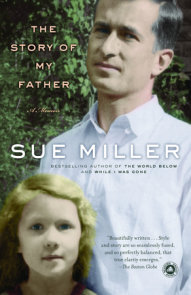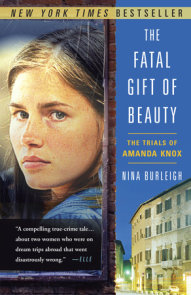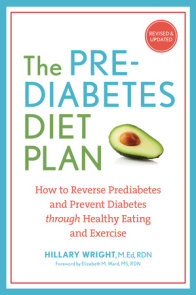READERS GUIDE
The questions, discussion topics, author biography and suggestions for further readingthat follow are intended to enhance your group’s reading of Seamus Deane’s Reading in
the Dark. We hope they will give you a number of perspectives from which to approach
this haunting first novel by one of Ireland’s most distinguished literary figures.
Introduction
Reading in the Dark‘s unnamed narrator looks back on his childhood and adolescence inthe 1940s and 50s in the Bogside neighborhood of Derry, a troubled town on the border of
the Republic of Ireland and Northern Ireland. Members of the boy’s family have been
involved in the IRA, whose guerrilla war for Irish independence continued in the North
when the signing of the Anglo-Irish Treaty in 1921 left six northern counties in the
control of Great Britain. In towns like Derry, the IRA continued to find willing
recruits among the Catholic minority, which faced discrimination in both employment and
housing and was routinely harrassed by the police.
Ireland’s history of political violence is the ostensible cause of a web of betrayals
that is the family secret–a secret that the narrator feels compelled to unearth. The
older brother of the boy’s father, his uncle Eddie, has disappeared on the night of an
IRA shootout with British forces in a local distillery in November 1922. To the family’s
great shame, Eddie is widely believed to have been an informer, that perennial bad seed
in Ireland’s history of failed uprisings, but no one knows for sure what happened to
him. The mystery only deepens when, on his deathbed, the boy’s grandfather tells the
boy’s mother something about Eddie that pitches her into a vortex of grief and
guilt–something that she refuses to divulge.
Another of the boy’s uncles, Tony McIlhenny, has disappeared as well, suddenly leaving
his pregnant wife, and is rumored to be living in Chicago. The boy’s mother knows
something about Tony’s fate too. She shares this knowledge with a half-mad local
character called Crazy Joe but keeps it from her husband, her son, and her sister, who
was abandoned by McIlhenny.
Once the boy begins to piece together the fragments of his family’s tortured history, he
cannot leave it alone–he pursues the truth until it turns his mother against him and
ultimately drives him away from home, despite his painful love for his parents. This is
the story of a family laboring under a crushing past, suffering from its own guilty
secrets–and of a boy who refuses to adhere to the family’s unspoken pact of silence.
Told in a poetic language that is dense with the felt immediacy of daily life, it is a
coming-of-age story that is searing and unforgettable.
Questions and Topics for Discussion
1. Many brief chapters make up Part One of the novel: the opening scene of the boy and his mother separated by "something there" on the stairs; the description of the boy killed by the lorry; Brother Regan’s story of the murder of Billy Mahon; the incident of the pistol and the interrogation by the police; the death of the narrator’s little sister Una and his vision of her in the graveyard; and Aunt Katie’s story of the haunted house. What, if anything, do these chapters have in common? What is their cumulative effect upon you as a reader?
2. How would you describe the sensibility and character of the narrator? Why is he so affected by the disappearance of Mr. Bamboozelem? Why does the boy seem so disturbed by his family’s secrets while his brother Liam is not?
3. The border between Northern Ireland and County Donegal lies just outside the city of Derry, and the narrator and his friends often take long walks into the country over the border. What is the symbolic importance of border-crossing? Of the contrast between countryside and city? What does Donegal signify for the boy’s family?
4. In Irish culture, guilt and shame are powerful and inescapable forces. What is the relationship between the two for the members of the narrators’s family and for the boy himself? What, if anything, is the boy guilty of?
5. The novel’s title comes from a scene on page 19 in which the narrator reads a romantic novel based on Ireland’s failed uprising of 1798. What kind of associations does the title raise? And how does this scene relate to the boy’s troubles throughout the novel–to both his wish for knowledge and his wish for escape?
6. Why does the boy destroy the rose bushes? Why is this particular act–and his father’s response to it–so painful?
7. What details might lead us to assume that this novel is autobiographical? How would this novel be different were it a memoir? What distinguishes the two literary forms? In what ways is Reading in the Dark different from memoirs that you have read?
8. The poet W. B. Yeats wrote of the Irish, "Great hatred, little room / Maimed us at the start. / I carry from my mother’s womb / A fanatic heart." Is it impossible for the characters in this book to live a life not determined by the past? Are there problems in this family that cannot be blamed upon historical and political forces? Are we meant to read this as a political novel?
9. What distinguishes story from history? Are the two ever confused in the world of this novel?
10. The narrator’s aunt Katie tells perhaps the most gripping of the novel’s many ghost stories, a tale reminiscent of Henry James’s "The Turn of the Screw," about the haunting of two young children by their dead parents. Do you see a parallel between this story and the narrator’s own? Why is there so strong an obsession with ghosts in this novel?
11. What has the boy’s mother done? What does Crazy Joe have to do with it? Was this a vindictive act of jealousy towards her sister? Is the mother’s suffering mainly self-induced?
12. When the narrator tells the entirety of what he has discovered to his parents, he does so in the Irish language–which neither of his parents understands. Why does he choose to unburden himself of his knowledge in this way?
13. Why are the police so violent when they search the house for the gun? How would you characterize the relationship of the boy’s family with the police?
14. The novel’s historical frame begins with the troubles in Derry after the partition of Ireland in 1921; it ends in 1971 after the outbreak of renewed political violence, which continues to the present day. What effect does this temporal framework have upon the tale and the way in which we read its ending?
15. Can the novel be read as a mystery? Does the end of the novel provide the satisfying sense of closure, of a puzzle having been solved, that most mystery fiction does? Or are crucial issues left unresolved?
16. What is the place of local myth, folklore, or superstition in the lives of the boy and his family? What is the role of religious faith? Are the two at odds with each other? Which, in the end, is more powerful?
17. Seamus Deane is an accomplished poet; how does his poetic sensibility, his distinctive use of imagery and language, make itself felt in the novel?
18. What is, for you, the single most moving passage in the novel? How does the language in which it is told–terse, poetic, ironic–shape your response?






















